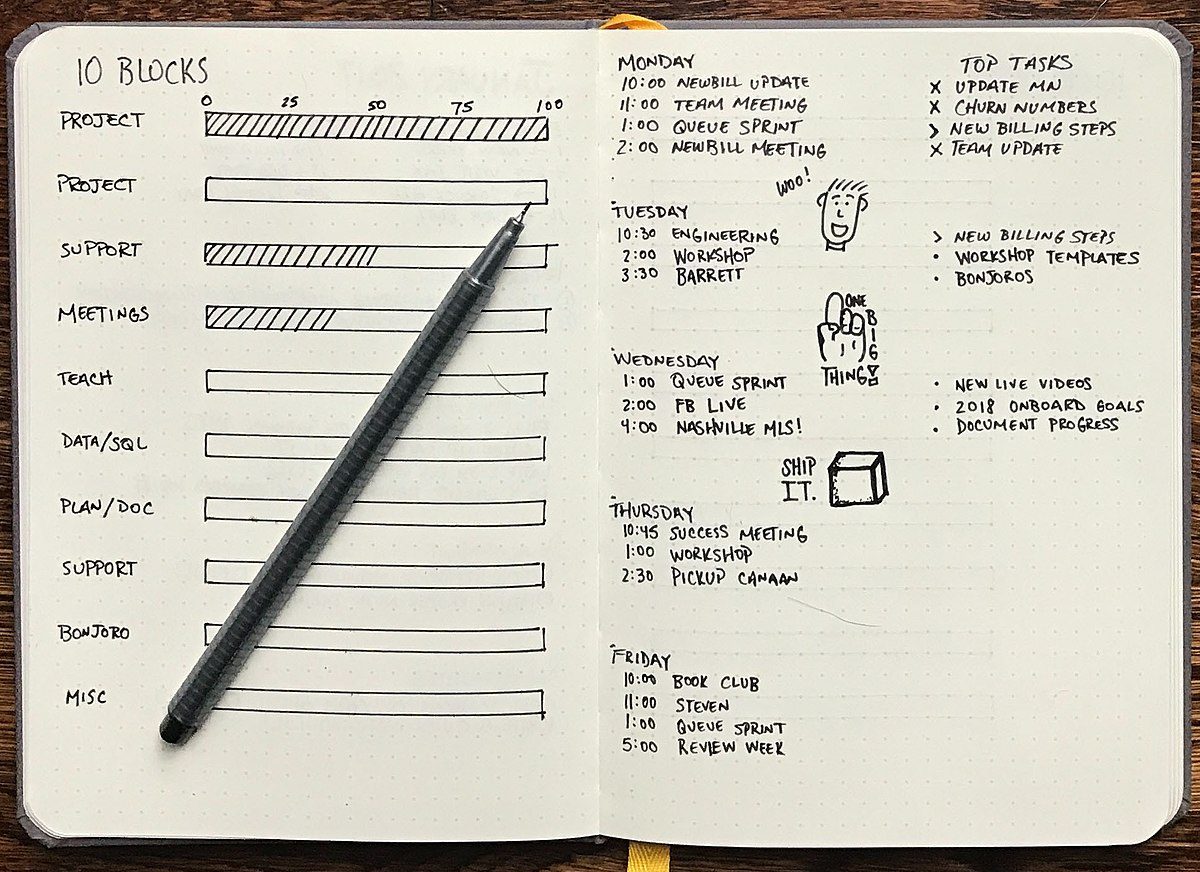How to Bullet Journal?
How to Bullet Journal? Bullet journaling is a customizable and creative way to organize your tasks, goals, thoughts, and schedules. Here’s a step-by-step guide on how to start bullet journaling:
1. Choose Your Supplies:
- Notebook: Any notebook with blank or dotted pages is great for bullet journaling. Popular options include Moleskine or Leuchtturm1917 notebooks.
- Pens/Pencils: You can use whatever writing tools you prefer, some of the most popular are Chino 0.35mm and Muji gel ink ball point pen . Many people like colored pens, fine liners, or markers to add creativity and organization. Our top pick goes to XSG Premium pens.
2. How to Bullet Journal? – Understand the Basics of Bullet Journaling:
Bullet journaling uses a simple system of symbols to organize your tasks, events, and notes. The core components are:
- Tasks: Represented by a dot (
•). - Completed Tasks: Marked with an
X. - Migrated Tasks: Represented by a right arrow (
→), which means moving a task to the next day or month. - Events: Represented by a circle (
o). - Notes: Represented by a dash (
-).
These are the basic symbols, but you can adapt or add your own based on what works for you.
3. Create Your Index:

The Index is usually the first page of your journal. This is where you’ll list what’s in your bullet journal and the corresponding page numbers so you can easily reference sections.
Example:
Index
Future LogMonthly Log - JanuaryDaily Log - Jan 2
4. Add a Key:
The Key helps you remember what each symbol means. You can write it on the first page or at the back of your journal.
Example of a simple key:
• Task
X Completed
→ Migrated
o Event
- Note
Remember you can customize and add the key to be tailored to your own goals and priorities 😉
5. Create a Future Log:
The Future Log is where you list major events or tasks that are scheduled for the future (usually a few months in advance).
Divide a spread (2 pages) into 6 sections for each month or 3 sections for 4 months, depending on your journal size.
Example of a future log format:
Jan - Feb - Mar - Apr - May - Jun…
Under each month, you can write important events, deadlines, birthdays, etc.
6. Design Your Monthly Log:
A Monthly Log gives you a broad view of the current month.
It typically consists of a calendar and a task list for the month.
- Calendar: Write out the days of the month, adding important events or deadlines.
- Tasks: List tasks to complete within the month (these can be migrated from the future log or added spontaneously).
7. Create Your Daily Log:
The Daily Log is where you break down tasks day by day. You can set up each day with:
- The date at the top.
- A list of tasks to complete that day.
- Any events happening that day.
- Notes about the day (ideas, reminders, etc.).
8. Trackers and Collections:
Bullet journals can also include trackers and collections, like:
- Habit Trackers: Track habits like exercising, drinking water, or meditating.
- Mood Trackers: Keep track of your mood throughout the month.
- Gratitude Logs: Write things you’re grateful for each day.
- Books to Read: Create a list of books you want to read.
9. How to Bullet Journal? – Decorating and Personalizing:
Bullet journaling is not just about productivity; it’s a creative outlet. Feel free to add:
- Doodles or artwork.
- Colorful pens or highlighters.
- Stickers or washi tape.
You can experiment with layouts, fonts, and themes that make your journal visually appealing and motivating ✨
Check out this Journaling Starter Kit to get you on your way in your new adventure.
10. How to Bullet Journal? – Review and Reflect:
At the end of each week or month, take time to:
- Review your progress.
- Migrate unfinished tasks to the next day or month.
- Reflect on what went well and what could be improved.
- Adjust your system if needed.
Additional Tips:
- Consistency is Key: Bullet journaling works best when you make it a habit. Try to set aside time daily or weekly to update it.
- Keep It Flexible: There are no strict rules. The beauty of bullet journaling is that you can adapt it to suit your needs, whether it’s for planning, creative expression, or tracking personal growth.
- Make It Fun: The process of designing your journal can be an enjoyable and rewarding creative endeavor.
Once you get the hang of it, you’ll have a system that fits your personal needs and goals. Now you have a head start and know how to bullet journal. Happy journaling!


Comments are closed